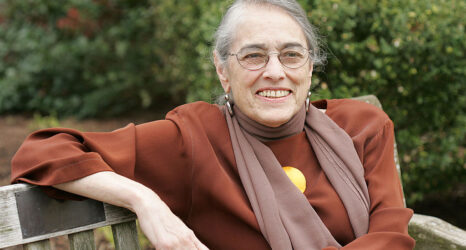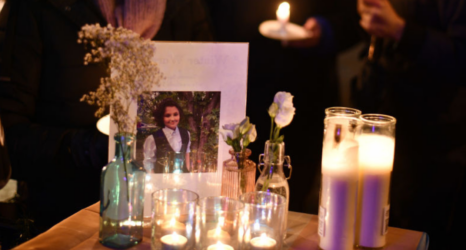Why have there been no great women artists?
It’s an irritating question, one intended to diminish. But as Linda Nochlin coolly proved nearly half a century ago, even academic inquiry can be an act of revolution.
Nochlin, who died on October 29 at the age of 86, was that rarest of beings: an art historian who altered the course of history. Mother of feminist art history, Nochlin’s groundbreaking work has inspired and sustained generations of academics and artists alike.
The question itself hadn’t started out as academic. It was a real one, posed to her offhand at a 1970 Vassar graduation ceremony—she graduated in 1951 and later taught there—by a male art dealer of her acquaintance. “I went home,” she said, “and thought about this issue for days. It haunted me.” The result of such haunting was her revolutionary 1971 essay, “Why Have There Been No Great Women Artists,” a witty polemic that proved both bomb and birth.
As Nochlin later wrote in Starting from Scratch: The Beginnings of Feminist Art History, “In 1969, three major events occurred in my life: I had a baby, I became a feminist, and I organized the first class in Women and Art at Vassar College.” She was, she realized, uniquely situated—personally, politically, professionally—to take on the structural inequities of western art history, and begin to dismantle them. “Nothing, I think, is more interesting, more poignant, and more difficult to seize,” she wrote, “than the intersection of the self and history.”
Her work demonstrated how self and history might prove the recipe for something thrillingly new. That is: a recovery of women artists of the past, an examination of the cultural structures that keep women from participating fully as art makers and a critique of the methodologies of traditional art history, implicitly and overtly white and male.
It’s worth mentioning that Nochlin was both a rigorous intellectual and also very funny. As a graduate student, I once saw Nochlin give a widely-promoted and well-attended lecture in New York on Renoir’s Les Grandes Baigneuses (The Large Bathers). After discussing certain formal elements of the painting, she suddenly jumped as if startled to catch sight of it on the giant screen beside her. She shook her head and said something like, “I don’t want to imply by going on this way that this is a great painting. It’s not.” Then in glorious detail she listed all the reasons why this supposed masterpiece sucked. I nodded along, thrilled. It was something I already believed but felt I shouldn’t say.
Nochlin gave us permission to report what we saw. She encouraged us to speak up when we knew the emperor had no clothes.
More famously, Nochlin made a pointed sendup of that art history class staple “compare and contrast” at 1972 College Art Association meeting in San Francisco. She put up a late 19th century photograph called “Buy My Apples,” of a mostly naked woman—still in stockings and boots, naturally—with her breasts resting on a tray she’s holding, alongside a contemporary photo Nochlin had taken of a nude male model holding his tray a tad lower, entitled “Buy My Bananas.”
He wears what look to be hiking socks and loafers. The pictures made her point perfectly. “It was the only ‘serious’ photo I ever took,” Nochlin wrote in 2012. “The rest is art history.”





